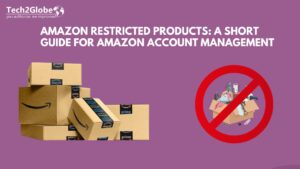Few things on Amazon are as confusing as parent-child variants. The majority of sellers are challenging to comprehend and look hard to produce. You’ll discover that most parent-child variation guides are either way too technical or missing the information necessary to comprehend variants. Because of this, we have put together this thorough and simple guide that will quickly turn you into an expert in the Amazon variety.
In This, We Will Look At
To learn more about parent-child connections on Amazon and how to use them effectively, see this blog. In our comprehensive guide, we’ll discover the following:
- What are the differences?
- The presentation of variants.
- When your products are in a variant, what happens to the data on your product detail page, feedback, and Amazon Enhanced Brand Content?
- How do you make a change? We’ve talked about both approaches.
- Guidelines for producing variations.
- What’s prohibited?

An Explanation Of Parent-Child Variations
Everyone is aware of that. However, according to Amazon, parent-child variation is:
Variations are groups of items that are linked to each other in regard to size, color, flavor, and other characteristics. Buyers can compare and select products based on several criteria, such as size, color, or other features, from the alternatives offered on a single product information page with good variation relationship listings.
Does My Product Need To Be Modified?
If any of the following statements apply to your product:
- If your products share some core similarities but have some clear differences (size, color, flavor, etc.)
- If your clients could view all of your linked products on a single detail page, it would make the purchasing process simpler for them.
- If both of your goods have the same name
What Format Do Variants Appear In Search Results?
It depends on the product category. The best-selling parent would be showcased in the areas of clothing, accessories & luggage, sporting goods, and beauty products, while the best-selling child would be showcased in all other categories. Even if your version isn’t performing well, it might still appear in the search results pages.
Does The Information On The Product Description Page Vary For Each Variant?
Once more, this is based on the category in which your product is listed. The information on the detail page (title, bullet points, description, photos, and other essential product details) is the same throughout all iterations for the clothing, accessories & baggage, sports equipment, and beauty categorization. The data will adjust to the variations for the other categories.
How Are A+ Pages Affected By Product Variation?
You have the option of having a unique A+ Page for each version or a single A+ Page for all variations. For color or size adjustments, an A+ Page combination is fantastic. One EBC, for instance, works perfectly if you sell footwear in five distinct colors or sizes.
How About Evaluations?
No matter what option is chosen, reviews are frequently compiled and posted.
The Structure Of Product Variation

Let’s clear out the fundamentals first, then move on to creating product variation. The breakdown of a parent-child variation is as follows:
Parent: A parent is not an independent entity. A parent listing connects all the kid listings together, sort of like a placeholder listing. A parent ASIN is not available for purchases.
Child: These listings are restricted to the parent and vary by theme. All of the child listings will be split apart if the parent listing is deleted. The child listings are distinguished from one another by the subject.
Themes: Themes of every size, color, and type are available.
Creating versions on Amazon has benefits:
Increased visibility: If you have a product that is sold briskly and one that is buried deep within the search result pages, and if both of them can be linked together in a detail page, then go ahead and create a variation. You may make your low-selling SKUs more discoverable by combining them with popular SKUs.
Sales will increase: When the two measures mentioned above are on the right side of the scale. Higher reviews follow better sales, and better exposure and conversion follow better reviews.
Reviews: Regardless of the option that your consumer chooses, reviews are always cumulative and are grouped under the same parent.
What Might Go Wrong?
The performance of a twister as a whole is influenced by the performance of a single kid variant. For instance, the gathered reviews will have average ratings if items with poor and good evaluations are combined under a twister. Even if the ratings are for one of the variations, all of your variations listings will sell less.
Conclusion: Ready To Create A Variation On Amazon?
Yes, this is a lot of information, but just read carefully and follow the steps and you’ll be able to successfully create, edit, delete and add variations to your listings. It’s a complex topic, so if you have any additional questions or need professional help, you can always count on Amazon Consulting agency to help you.










